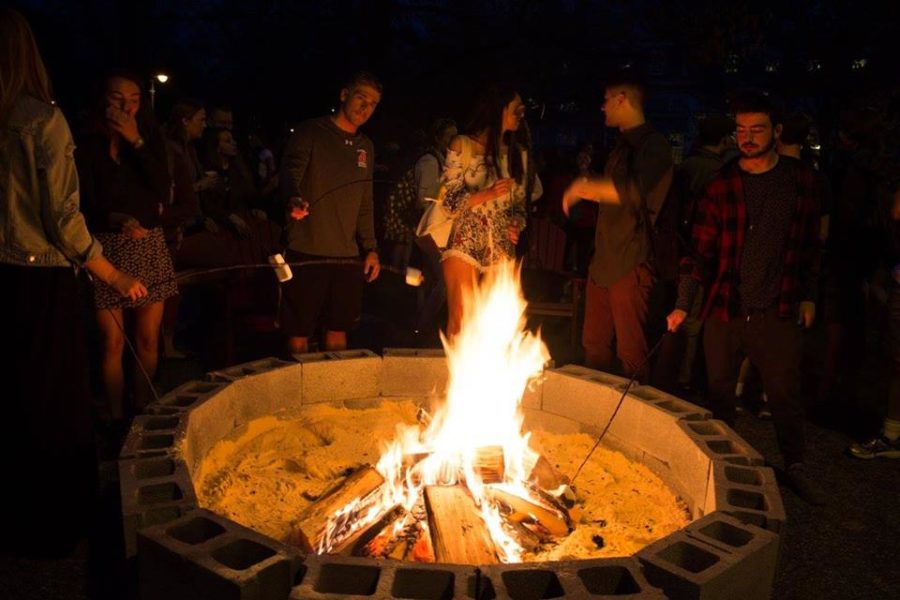Challenge Reduces Carbon in Halls by 16,703 Pounds
Dickinson students and Center for Sustainability Education (CSE) representatives marked reducing carbon usage in residential halls by 16,703 pounds with a bonfire on Morgan Field.
The bonfire, held on April 19, took place after the third and final week of the Energy Challenge’s Residence Hall Electricity Competition. Each residential building on Dickinson’s campus competed to achieve the greatest percentage of energy reduction from a baseline measurement taken before the challenge. The bonfire featured smores, hot chocolate and a performance from the Syrens acapella group.
Kayla Harney ’21, who attended the bonfire, paid closer attention to her habits over the course of the Energy Challenge. “In the bathroom, the lights were off most of the time and my roommate and I were extra sure to turn them off all the time,” Harney said. “We turned off all the things we didn’t use—microwave, coffee maker.”
For Yale Yoon ’21, who also attended, the competition was a continuation of his routine. “I always have a habit of turning off lights in my room if I don’t need it, or in the bathroom,” Yoon said. “Nobody else in my dorm actually does it, but I do it, just because.”
During the event, the residential halls which had conserved the most electricity
See Challenge, page 3
were officially recognized. Kisner-Woodward won the electric-heated buildings category, while Adams took the top spot for gas-heated buildings. Natasha Di Centa ’21, an Adams resident, said she was “super happy” to hear the news after changing her uses of energy.
“Before [the Energy Challenge] I was doing [laundry] as part of my weekly routine, but instead I started considering whether there were enough clothes to warrant running the machine,” Di Centa said. “Also, whilst I always try to turn off my lights anyway, adding the competitive edge of the Energy Challenge made it ever more important for me to ensure that both lights were switched off when I was not in my room.”
Steven Fitzpatrick ’18, Eco-Rep for Kisner-Woodward, credited his building’s success to his residents, stating that “we couldn’t have made such a big energy reduction without them.”
“As we have very few common spaces contributing to our energy consumption, residents of KW [Kisner-Woodward] took the initiative to cut ,down on the electricity for the heat and cooling units in each of the rooms,” Fitzpatrick explained. “As it started to get warmer for a short time, residents took the opportunities to go hang out outside and leave their heating units completely off, cutting down a lot of our electricity consumption. Moreover, during the challenge, we made sure that the last person out of the bathrooms turned off the lights.”
According to Giuseppe Collia ’20, Energy Challenge Coordinator for the Center for Sustainability Education, the challenge is in its seventh year. The 2018 challenge theme was “Go All Out.”
“We do [the] Energy Challenge to encourage people to reduce their consumption and also to build habits for life in using electricity,” Collia said. “That’s why we do it for three weeks, because it takes a little time to break bad habits and build good ones.”
Students can view the final reductions in energy usage for their residence halls on the “Energy Challenge 2018” page on Dickinson’s website.






